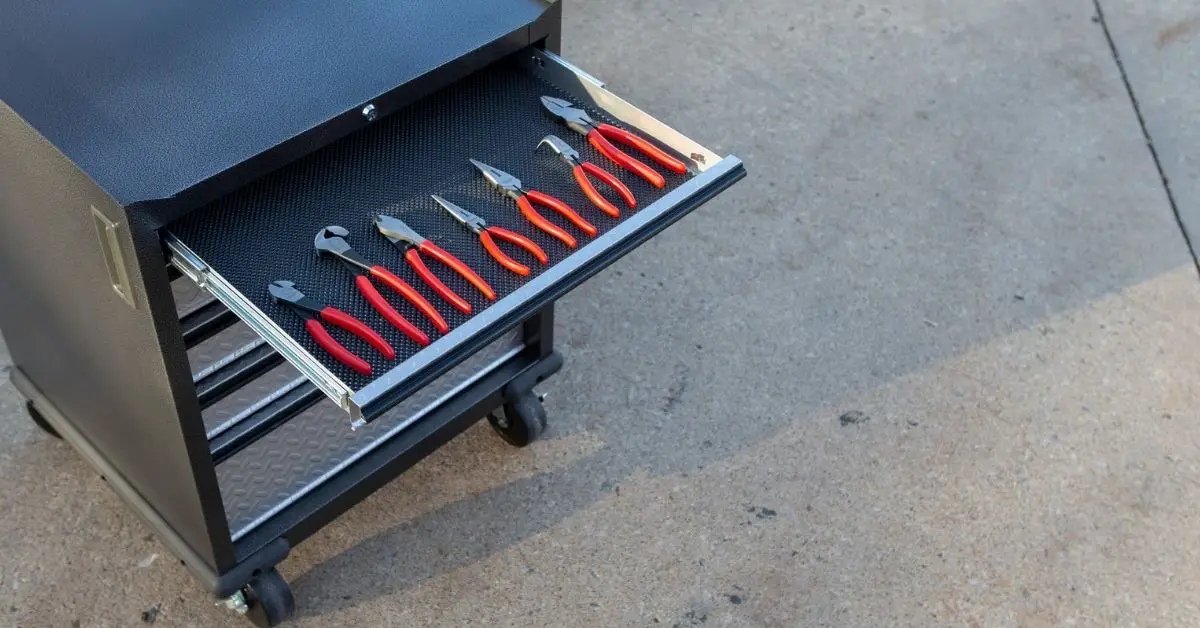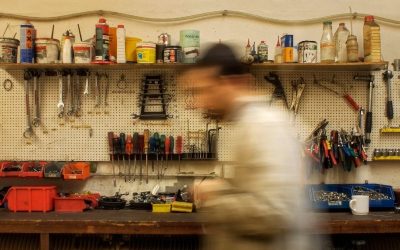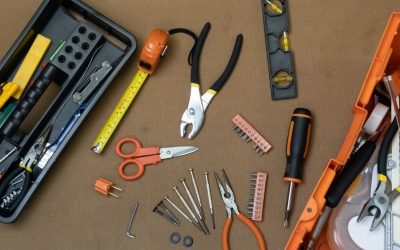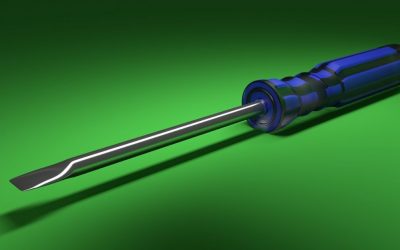Share

- What Are Pliers And Why Do We Use Them?
- 1. Long Nose Pliers
- 2. Grommet Pliers
- 3. Pipe Pliers
- 4. Linesman Pliers
- 5. Combination Plier
- 6. Side Cutter Plier
- 7. Angle Needle Nose Plier
- 8. Crimping Plier
- 9. Cable Cutting Plier
- 10. Snap Ring Plier
- 11. Bent Nose Plier
- 12. Fencing Pliers
- 13. Battery Plier
- 14. Flat Nose Plier
- 15. Chain Nose Plier
- 16. Hose Clamp Plier
- 17. Locking Pliers
- 18. Running Pliers
- 19. Diagonal Pliers
- 20. Regular Plier
- Online Market
- Hardware Store
- Gardening Store
- Safety Precautions For Using Pliers
- Purchase The Correct Type Of Tool For Your Project
- Make Sure It Is Adjustable
- Always Wear Eye Protection When Using Pliers
- Know The Proper Way To Use Pliers
- Pinching The Nose Of A Pair Of Pliers
- Bending Wire With Pliers
- Using The Wrong Type Of Pliers For Your Job
- Using A Wrench In Place Of Pliers
- Breaking Off Metal With Your Pliers
In this blog post, we will discuss the different types of pliers and how they are used. There are many types of pliers that can be used for various projects, from electrical work to gardening.
In order to make sure you have the right tool for the job, it is important to know what each type looks like and how they work so you can choose accordingly.
What Are Pliers And Why Do We Use Them?
Pliers are hand tool that is designed to hold and bend or cut metal. Pliers come in many different shapes, sizes, types, and colors. Pliers are used for many different purposes, including automotive work, plumbing, electrical wiring, and general construction.
Types of Pliers
There are several types of pliers that you can choose from when it comes to your project or task. Below is a list containing the most common type of pliers:
1. Long Nose Pliers
Longnose pliers have a long nose that is designed to allow you to get into tight spaces.
Where To Use Long Nose Plier?
Longnose pliers can be used for a variety of different purposes such as gripping, holding, pulling, and bending. Moreover, this type of pliers can be used to turn nuts and bolts as well.
2. Grommet Pliers
Grommet pliers are used for installing grommets into the fabric. They are designed to make a hole in the fabric as well as cut off excess material from around the grommet.
Where To Use Grommet Pliers?
Grommet pliers can be used for installing electrical wire, cable wiring, and various other tasks that require making holes or cutting through soft materials such as rubber or plastic. Moreover, these type of pliers has a serrated jaw which is perfect for gripping onto objects with varying shapes and sizes.
3. Pipe Pliers
As the name suggests, a pipe plier is a tool specifically designed for gripping or holding pipes such as copper tubes or conduits.
Where To Use Pipe Plier?
Pipe pliers can be used on a variety of different materials such as metal, plastic, and wood. Moreover, you will find those pipe pliers come in several sizes, so choosing the right one is important.
4. Linesman Pliers
Linesman pliers are an extremely versatile tool designed for gripping or holding objects from various materials, including steel wire, nails, or bolts.
In addition, this specific type of plier also has a crimping groove which makes it perfect for bending the ends of electrical connectors on wires together before soldering them together.
However, linesman pliers cannot be used to cut material due to its shape and design therefore always keep that into consideration.
Where To Use Linesman Plier?
Linesman pliers are perfect for a wide range of applications including electrical work, plumbing and carpentry.
Moreover, this type of plier is extremely easy to use without any risk involved which means it can be used by both beginners as well as professionals in the industry.
With that being said, you should take note that linesman pliers have teeth on them therefore when using these tools make sure they do not scratch or damage the material otherwise it will ruin your project entirely.
5. Combination Plier
Combination pliers are designed with two different head types in order to give you more freedom when choosing what kind of task you want to accomplish throughout each day at work or home.
Where To Use Combination Plier?
Combination pliers can be used for a wide range of different purposes such as cutting, crimping, and pulling. Moreover, these types of pliers are extremely versatile to use both in the home or workplace, which has become so popular among professionals and beginners alike!
6. Side Cutter Plier
Side cutter pliers have angled jaws that will allow you to cut wires quickly and easily without any risk involved.
In addition, this specific type of plier also comes with an adjustable spring mechanism along with comfortable grip handles in order to protect your hands from cuts while using the tool at the same time.
However, it should be noted that side cutters cannot strip wire therefore if you need to cut and strip wire, you would have to use two different tools.
Where To Use Side Cutter Plier?
As mentioned before, this type of plier is used for cutting wires instead of stripping them.
However, they can also be useful in other applications where you need to cut or strip wire but with a smaller diameter than regular side cutter pliers are able to handle. If you do not need to work on bigger pieces, these pliers would still get the job done just fine!
7. Angle Needle Nose Plier
Angle needle-nose pliers have a 90-degree angle at the point of the jaws and they are very useful in tight spaces where the jaws need to be flat against an object.
Where To Use Angle Needle Nose Plier?
These types of pliers are used in any situation where you need to get into small spaces with your tools. This is why they are typically used by people who do electrical work or repair electronics because this type of tool will help them reach hard places where they would not be able to access otherwise.
However, the only downside here is that these types of pliers cannot strip wire which creates an extra step for anyone trying to use it as part of their job. They can still cut and bend wire, but they would have to purchase two separate tools if someone needs both functions!
8. Crimping Plier
Crimping pliers allow you to crimp, cut, and bend the wire all in one tool! In addition, it also provides a solid grip on the material while working with your hands at the same time.
Where To Use Crimping Plier?
These pliers are extremely useful when doing electrical work because they basically have everything needed for creating wires from scratch.
This means you would not need anything else besides this specific type of tool which makes it very convenient if someone’s job requires them to make their own cables or wires throughout each day.
However, keep in mind that these types of pliers cannot strip wire therefore if an individual needs both functions then they will need two separate tools such as a side cutter plier and a wire stripping device.
9. Cable Cutting Plier
These types of pliers are used for cutting through hard surfaces such as metal, rubber, or plastic which makes it perfect when you need to make holes in the material while working with your hands at the same time.
In addition, this particular tool has also been designed with two different blades on each jaw that will let you cut wires from both sides easily without any risk involved!
Where To Use Cable Cutting Plier?
In most cases, these types of pliers would be able to handle almost anything so it is really up to an individual’s personal preferences whether they want one specific type over another.
Still, there are some out there that have specific purposes in mind when using the tool, so you should always make sure to read reviews before making a final decision.
For example, some people might prefer a side cutter plier over cable cutting pliers because it does not have an adjustable blade and can still cut through wires of different sizes while providing more safety for their hands at the same time!
10. Snap Ring Plier
Snap ring pliers are used for removing snap rings which can be found in many different types of equipment or appliances. They also come with two adjustable blades, making the job a lot easier when trying to remove these components!
Where To Use Snap Ring Plier?
These types of pliers are extremely useful if you use any sort of machinery on a daily basis. This is because they allow an individual to access difficult areas that require additional tools such as screwdrivers or something similar before opening it up and changing its parts out just fine.
In addition, some people have even reported using this type of tool for jewelry-making purposes so keep all options open whenever looking into purchasing one yourself!
11. Bent Nose Plier
Bent nose pliers are used for detail work when trying to bend or shape any kind of wire without causing damage to the surrounding area. In addition, it also has a very useful gripping jaw which makes this type of plier extremely helpful whenever working with small objects such as jewelry!
Where To Use Bent Nose Plier?
It is important to know that bent nose pliers are typically used for small, delicate objects. These can be anything from jewelry pieces to watch repair. With its curved tip and gripping jaws, the bent nose plier provides an essential tool when it comes to working with small parts or intricate designs!
12. Fencing Pliers
Fencing pliers are used for gripping, bending, and cutting any kind of wire. These types of pliers have a very similar design to side cutter pliers because they both come with two adjustable jaws that will let an individual cut through wires without much effort at all!
Where To Use Fencing Plier?
These pliers are extremely useful when trying to cut through thick pieces of metal or other heavy-duty objects that can be found in many different applications throughout daily life.
For example, if someone needs to make holes in steel fences, this would be the perfect tool since it cuts through material like butter while providing maximum grip on the object itself. In addition, some people even grab fencing pliers for welding purposes if they do not have the proper equipment at home!
13. Battery Plier
Battery pliers are used to removing or tighten any type of small screw that can be found on a variety of different appliances. In addition, it also has an adjustable and non-slip grip that makes this particular tool very easy to use just about anywhere!
Where To Use Battery Plier?
Battery pliers are used when you want to remove or tighten small screws. It is not recommended to use a battery plier when you want to remove large screws. This type of tool is especially helpful in electronics or hardware stores where it can be used for various applications!
14. Flat Nose Plier
Flat nose pliers have a flat surface at the business end of the tool. These are used to grip objects and bend wires into shapes. The two most common types of flat-nose pliers are needle-nose pliers and long needle-nose pliers.
Where To Use Flat Nose Plier?
This kind of plier is best-suited for working with small objects such as jewelry components. Moreover, it can also be used to grip wires.
15. Chain Nose Plier
Chain nose pliers have tapered jaws with pointed tips which allow you manually bend metal components without causing any damage to the surrounding area.
Where To Use Chain Nose Plier?
This type of pliers is used for precision tasks that require a detailed grip on small components such as jewelry-making purposes or working with miniature objects. In addition, they can also be helpful when trying to make precise adjustments in tight spaces.
16. Hose Clamp Plier
Hose clamp pliers are used for gripping any kind of hose or nut. These types of tools have an adjustable jaw which allows them to open wider than most other tools available on the market today!
Where To Use Hose Clamp Pliers?
This particular type of plier is essential when trying to grip a variety of different objects that might be found in many applications including plumbing and automotive repair. In addition, this type of tool can also be helpful when you need tightened clamps around hoses during plumbing jobs as well as various projects at home!
17. Locking Pliers
Locking pliers are used for clamping, twisting, and turning any type of material. These tool types have a locking feature that allows them to be adjusted into the desired position until it is released!
Where To Use Locking Pliers?
This particular plier has an adjustable jaw that can open up to 180 degrees, allowing you to cut through wires with ease. In addition, they are great when working in tight spaces or trying to grip small components because these tools provide maximum strength at all times without causing damage to the surrounding area!
18. Running Pliers
Running pliers are used to cut through nails, bolts, or any other type of metal found in various applications. These types of tools have a long narrow jaw which allows you to get into small areas without causing damage!
Where To Use Running Pliers?
This particular type of plier is perfect when working with different components such as fencing and steel sheets because it can cut through nails easily without causing damages to the surrounding area.
In addition, this kind of tool works best on flat surfaces where precise cuts need to be made while providing maximum grip throughout the process!
19. Diagonal Pliers
Diagonal pliers are used for gripping any type of wire, nails, or bolts. These tools have flat jaws that allow you to cut through metal components easily without causing damage!
Where To Use Diagonal Pliers?
This kind of tool is perfect when working on a variety of different projects because it can be adjusted into the desired position and locked there until released making this particular tool very easy to use just about anywhere!
20. Regular Plier
This is one of the most common types of pliers that have jaws that are inclined. It is typically used for gripping small objects such as nails, bolts, and other components found in a variety of applications!
Where To Use Regular Plier?
This type of tool works best for gripping objects with flat surfaces. It is great for activities such as plumbing, carpentry, and construction but can also be used at home when you are working on projects around the house!
Where Can You Buy Pliers?
There are many different places where you can go to purchase different types of pliers.
Online Market
People are now able to purchase a variety of tools online through various websites such as Amazon or eBay.
Hardware Store
In addition, people are also able to go to their local hardware store and pick up whatever they might need for the job at hand.
Gardening Store
If needed, people can also go to a gardening store and pick up different types of pliers that might be helpful for their job.
Safety Precautions For Using Pliers
When using any tool, safety precautions need to be taken before beginning the job at hand.
Purchase The Correct Type Of Tool For Your Project
Before purchasing different types of pliers for your project you should first make sure it is the correct type of tool needed for the task at hand.
Make Sure It Is Adjustable
If possible, all tools should be adjustable so they can fit into various positions making them easier to use in different areas.
Always Wear Eye Protection When Using Pliers
When using any type of tool, safety glasses should always be worn to protect the eyes in case anything goes wrong when cutting or gripping various objects.
Know The Proper Way To Use Pliers
In addition, it is important to know the proper way of using pliers so you can avoid any injuries that might occur while cutting through various materials.
Common Mistakes People Make With Their Pliers
Here are the most common mistakes people make when using their pliers.
Pinching The Nose Of A Pair Of Pliers
People often pinch the nose of a pair of pliers when trying to grip an item. The pinching causes the metal on both sides to get dented or misshapen, affecting its ability to grip its next target.
Bending Wire With Pliers
Another common mistake people make is bending wire with their pliers instead of using a tool specifically designed to do the job. This causes the shape of your wire ends to change, affecting its ability to fit into a slot or hole on another tool you are using later down the line.
Using The Wrong Type Of Pliers For Your Job
People often use their needle-nosed pliers for jobs that require flat nose ones because they don’t know the difference. The job requires different tools because it makes their work easier and more effective in completing your task.
Using A Wrench In Place Of Pliers
People often use a wrench when they need to grip something, but this is not necessary as you can easily turn bolts or nuts with pliers without having to lug around another tool that takes up extra space on your belt.
Using a wrench means you now have two things you’re carrying instead of one which will make certain jobs take longer than expected as well as put unnecessary weight into your hands and onto your body if they are heavy-duty wrenches.
Breaking Off Metal With Your Pliers
One common mistake makes even after knowing better is that of breaking off metal with your pliers. This is due to the fact that you are using a tool not designed for this task, and when it comes in contact with a hard material such as metal or stone can cause damage to both tools themselves.
Using a screwdriver instead means no risk of damaging your valuable equipment, but also much easier access through screws which saves time overall on any job where a variety of different sized bolts need to be accessed quickly without hassle.
If people know all about these common mistakes when using pliers, they can avoid making some while working with them on future projects requiring this tool for success.
Taking Care Of Your Pliers
Taking care of your pliers means making sure you don’t use them for any jobs that are outside of their intended purpose. This will affect your tool’s overall integrity and form, so it is best to have a variety on hand if one set breaks down unexpectedly while out in the field.
Another thing people should do when using their pliers is clean off dirt or debris after each project to ensure they remain slippery enough during work hours without harming themselves or anyone else around them at all times.
Keeping them sharpened also makes gripping objects much easier and other tools with screw heads, which means less time spent trying to fasten things securely into place across many different types of materials used for home improvement projects. More care taken over these tools ensures greater success on future projects involving them.
Here’s a video on how you can use your pliers properly:
How Long Do Pliers Last?
Pliers have an average lifespan of about two years if they are used on a daily basis for jobs around the home. If not, then it is possible these tools can last up to five or six before becoming unusable due to the metal being stretched out too far or just simply dulling over time from lack of use.
This means that pliers should be kept in good working condition at all times even when not actively using them so you don’t encounter any problems down the line with your projects involving this tool as well as make sure safety isn’t compromised while completing your job.
How To Sharpen Your Plier’s Nose Tip
Sometimes depending on how much work you do with your plies their nose tips will become dull and not cut through things such as wire or sheet metal. This is when it’s best to sharpen them using a file to ensure they can grip things without slipping off or causing harm in the process of trying to complete any job that requires this tool for success.
Is It Possible To Use Pliers As A Hammer?
If you need to hammer down nails into the wood then your pliers will work perfectly fine providing there are no issues with their handle breaking from too much use on hard objects like steel which could cause structural damage over time even though these tools should be able to withstand up most jobs involving other materials used around the home besides just basic plastic ones without being compromised so easily.
What Is The Difference Between Needle Nose And Regular Pliers?
Needle nose pliers are designed for smaller tasks involving thin metal objects that the regular ones cannot grip securely enough without breaking them in half due to being too large.
The needle nose variety also has a sharper point on the end of their design which allows you to get into tighter spaces with more ease while working, but they both do basically the same thing when it comes down to gripping things firmly and pulling at certain angles until something gives way if need be for safety reasons during any home improvement project where these tools are required.



0 Comments